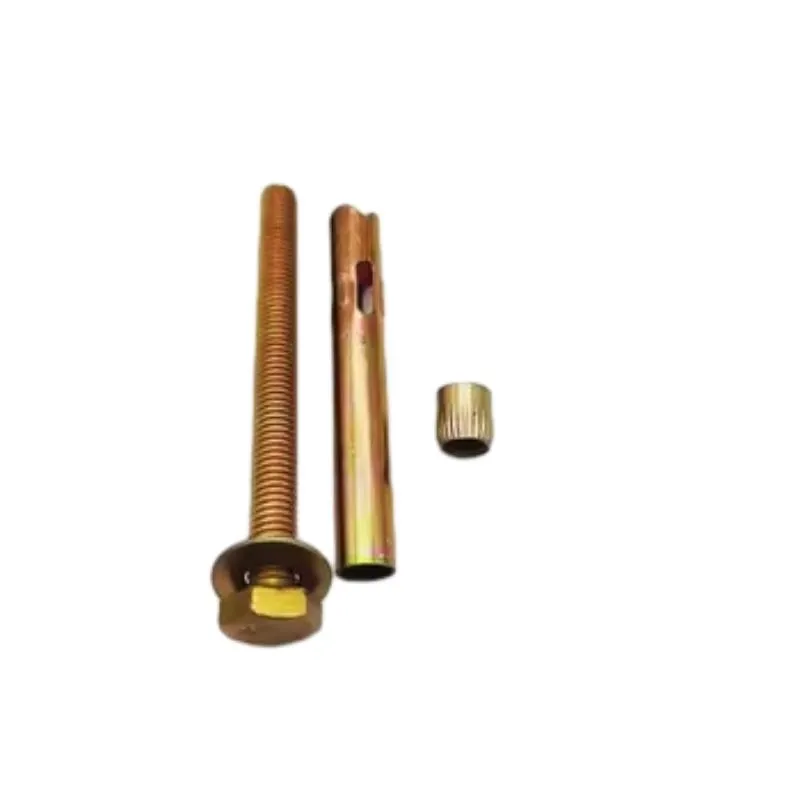Dec . 10, 2024 19:47 Back to list
Understanding Different Bolt Varieties and Their Applications in Various Industries
Understanding Bolt Types and Uses A Comprehensive Guide
Bolts are essential components in a wide array of applications, ranging from construction and automotive industries to household repairs. These fasteners play a pivotal role in securing objects together by creating strong, reliable connections. However, with the myriad of bolt types available, selecting the right one for a specific task can be daunting. This article aims to clarify various bolt types and their uses, providing a useful reference for both professionals and DIY enthusiasts.
1. Types of Bolts
The classification of bolts can primarily be segmented into several categories based on design, material, and intended purpose. Below are some of the most common types
- Hex Bolts Hex bolts, as the name suggests, have a hexagonal head and are designed to be threaded for a nut or directly into a material. They are prevalent in construction and machinery due to their strength and versatility.
- Carriage Bolts These bolts have a rounded head and a square section underneath that prevents them from turning when the nut is tightened. They are often used in wood-to-wood or wood-to-metal applications, as they provide a smooth finish on the exposed side.
- Lag Bolts Also known as lag screws, these heavy-duty fasteners have coarse threads and are typically used for fastening wood or other materials that require substantial holding power. They are favored in outdoor constructions, such as decks and large furniture.
- Eye Bolts Eye bolts feature a loop at one end, allowing for the attachment of ropes or cables. They are commonly used in rigging and lifting applications, making them essential in marine environments and manufacturing settings.
- Shoulder Bolts These bolts have a non-threaded shoulder under the head, which allows for rotation and movement, making them ideal for use in hinges and axles.
- Tension Bolts Designed specifically for applications that require high tension, these bolts are often used in bridge constructions and other load-bearing structures.
2. Essential Materials
The material of a bolt significantly influences its performance in various environments
. Common materials includebolt types and uses

- Steel Generally the most common material for bolts, steel provides excellent strength and durability. It is often available in grades such as Grade 2, Grade 5, and Grade 8, each suitable for different load requirements.
- Stainless Steel This material is resistant to corrosion and tarnishing, making it ideal for applications exposed to moisture, such as marine or outdoor environments.
- Brass Known for its aesthetic appeal and resistance to corrosion, brass bolts are used where electrical conductivity or beauty is required, such as in decorative fixtures.
- Titanium Though more expensive, titanium bolts offer exceptional strength-to-weight ratios and corrosion resistance, suitable for aerospace and high-end applications.
3. Selecting the Right Bolt
Choosing the appropriate bolt involves considering several key factors
- Load Requirements Assess the load the bolted joint must support. Heavier loads may necessitate high-grade steel bolts or lag bolts.
- Environmental Conditions For environments involving moisture or chemicals, corrosion-resistant materials like stainless steel or brass should be prioritized.
- Type of Material Being Fastened Different materials may require specific types of bolts; for instance, wood projects are well-suited to carriage bolts, while metal applications might require hex bolts.
- Installation Accessibility Consider how accessible the installation site is, as certain bolts require specific tools for tightening, such as a wrench for hex bolts or a socket for lag bolts.
4. Conclusion
Understanding the diverse types of bolts and their appropriate applications is crucial for ensuring durability and safety in any construction or repair project. By familiarizing yourself with the various categories of bolts and their materials, you can make informed decisions tailored to your specific needs. Whether you are a professional contractor or a DIY enthusiast, having the right bolt for the job is vital in achieving the desired results. Armed with this knowledge, you can approach your next project with confidence, knowing you have the right fasteners for the task at hand.


